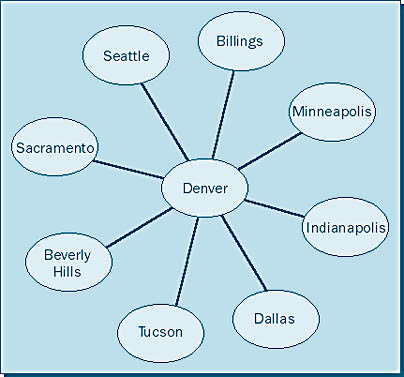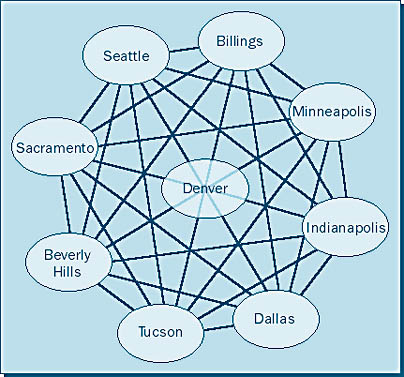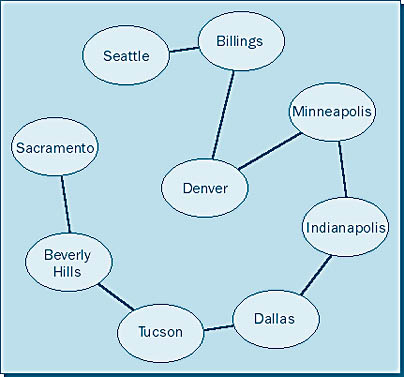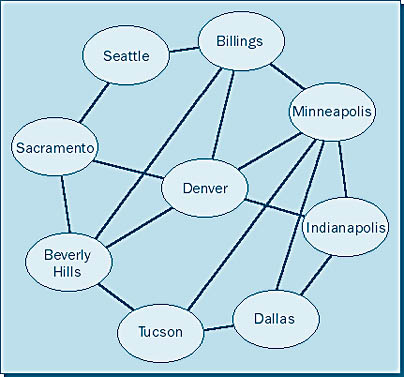Routing Group Topologies
You can connect your routing groups in several ways. The most common topologies are the hub-and-spoke and the modified mesh topology. A hub-and-spoke topology, as the name indicates, will have a central routing group to which all other routing groups are connected (Figure 3-8). Administration is easier in a hub-and-spoke topology because there aren't as many RGCs to create and maintain. The one huge disadvantage of this topology is that there is a single point of failure. If either the Exchange 2000 servers or the physical connections into and out of the hub become unavailable for any reason, messaging between routing groups is effectively terminated until the problem can be resolved.
In a mesh topology, each routing group has an RGC configured to every other routing group in the organization. This topology provides redundancy in the event of a link or server failure at any given point; the link state information will reroute the message via another path. However, administration is more difficult since there are more RGCs to create and maintain. Figure 3-9 illustrates a mesh topology.

Figure 3-8. Hub-and-spoke topology.

Figure 3-9. Mesh topology.
A less common method of connecting routing groups together is the linear topology (Figure 3-10). In this topology, all of the routing groups are connected by placing them in logical order in a straight line. Although this topology might be the easiest to set up due to the limited number of RGCs needed, it is fraught with potential problems. For instance, there is no redundant routing; therefore, the loss of a link between any two routing groups means that messaging will be hindered across the entire organization. Second, messaging from one end to the other may take longer than is pragmatically good for the organization. In the absence of alternate routes, messaging latency could become a real problem. This topology is the least desirable, and best practice would favor either the hub-andspoke topology or the modified mesh topology described next.
The modified mesh topology (Figure 3-11) has multiple routes to each routing group but does not concern itself with making sure that each routing group is connected to every other routing group in the organization. In most cases, a modified mesh topology will be the best choice.

Figure 3-10. Linear topology.

Figure 3-11. Modified mesh topology.
EAN: N/A
Pages: 193